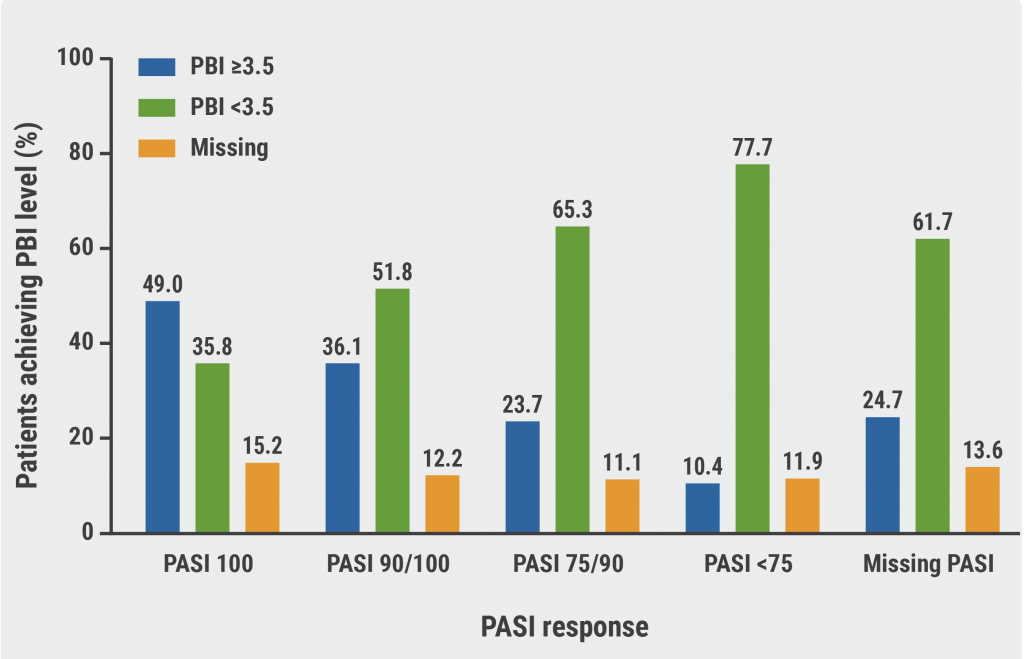Of patients suffering from hyperhidrosis, 75% report a profoundly negative impact on their social life, well-being, and emotional and mental health [1]. Long-term treatment is often necessary given the chronic nature of primary axillary hyperhidrosis. Sofpironium is an analogue of the anticholinergic agent glycopyrrolate. In contrast to the latter, sofpironium is a retro-metabolic molecule, which is designed to undergo rapid metabolism into less active moieties following absorption after topical application. Due to this short systemic half-life, better tolerability can be expected.
The identically designed Cardigan I (NCT03836287) and Cardigan II (NCT03948646) trials evaluated safety, local tolerability, and efficacy regarding sweat production, patient-reported outcomes, and quality-of-life self-assessment of the 15% gel [2]. In each study, 350 axillary hyperhidrosis patients aged 9 years or older were randomised to receive the gel or a vehicle cream for 6 weeks with an ensuing 2-week follow-up.
Overall, 89% of participants completed the 6 weeks of treatment. In both studies, the gel led to statistically significant reductions in the Hyperhidrosis Disease Severity Measure-Axillary (HDSM-Ax) score of ≥2 points: 49.3% in the Cardigan I trial (compared with 29.4% in the vehicle group; P<0.001) and 63.9% of participants in the Cardigan II study (compared with 47% in the vehicle group; P=0.003) achieved this endpoint. Moreover, participants in the treatment group had a higher reduction of gravimetric sweat production (GSP) from baseline compared with the vehicle gel.
The gel was overall well tolerated. “Most adverse events were mild or moderate in severity and what we would expect from an anticholinergic such as a dry mouth, blurred vision, and application site pain,” Prof. David Pariser (Eastern Virginia Medical School, VA, USA) said. Application site pain was seen most frequently. Reassuringly, fewer anticholinergic effects and treatment discontinuations than expected occurred despite the relatively high concentration of 15%. Moreover, treatment-emergent adverse events (both systemic and local) decreased over time because, as Prof. Pariser put it, “patients got used to the treatment.”
- Doolittle J, et al. Arch Dermatol Res. 2016;308(10):743–749.
- Pariser D, et al. Topically applied sofpironium bromide gel, 15% for the treatment of primary axillary hyperhidrosis: results from the Cardigan I and Cardigan II phase 3 multicenter, randomized, placebo-controlled trials. S026, AAD 2022 Annual Meeting, 25–29 March, Boston, MA, USA.
Copyright ©2022 Medicom Medical Publishers
Posted on
Previous Article
« Maintaining normal thyroid function important for the heart Next Article
Alopecia areata: 1-year baricitinib treatment increases success »
« Maintaining normal thyroid function important for the heart Next Article
Alopecia areata: 1-year baricitinib treatment increases success »
Table of Contents: AAD 2022
Featured articles
Letter from the Editor
Lebrikizumab treatment leads to encouraging outcomes in multiple traits of AD
New Developments and Unmet Needs in Dermatology
Light at the end of the tunnel for vitiligo therapy
Intestinal microbe-preparation: Modest activity but safe for mild psoriasis
Alopecia areata: 1-year baricitinib treatment increases success
New anticholinergic preparation is effective and tolerable in hyperhidrosis
What’s Hot in Rare Diseases
Add-on apremilast may improve recalcitrant dermatomyositis
Could dupilumab put an end to the therapeutic draught in prurigo nodularis?
Fungal skin infections in children: A diagnosis to keep in mind
Innovative gel speeds up clearance of molluscum contagiosum lesions
JAK inhibition offers promising treatment prospects for uncommon dermatoses
JAK inhibitors may offer a new horizon in the treatment of sarcoidosis
Psoriasis: State of the Art
New insights into psoriasis comorbidity
Long-term psoriasis treatment with bimekizumab results in maintained efficacy
Novel developments in topical psoriasis therapy
Atopic Dermatitis: Novel Agents Enter the Stage
JAK inhibitors in AD: Setting the efficacy bar even higher
Lebrikizumab treatment leads to encouraging outcomes in multiple traits of AD
Novel IL-4/IL-13 blocker shows high efficacy with only modest conjunctivitis signal
Posters
Inpatient dermatologic therapy is linked to lower mortality and readmission rates
AD treatment during the pandemic: dupilumab does not raise COVID-19 infection risk
Upadacitinib: Fast and more pronounced skin improvement in AD patients
Dermatology diseases need the highest doses of biologics
Related Articles

September 17, 2021
Psoriasis registries yield important data about COVID-19
© 2024 Medicom Medical Publishers. All rights reserved. Terms and Conditions | Privacy Policy

